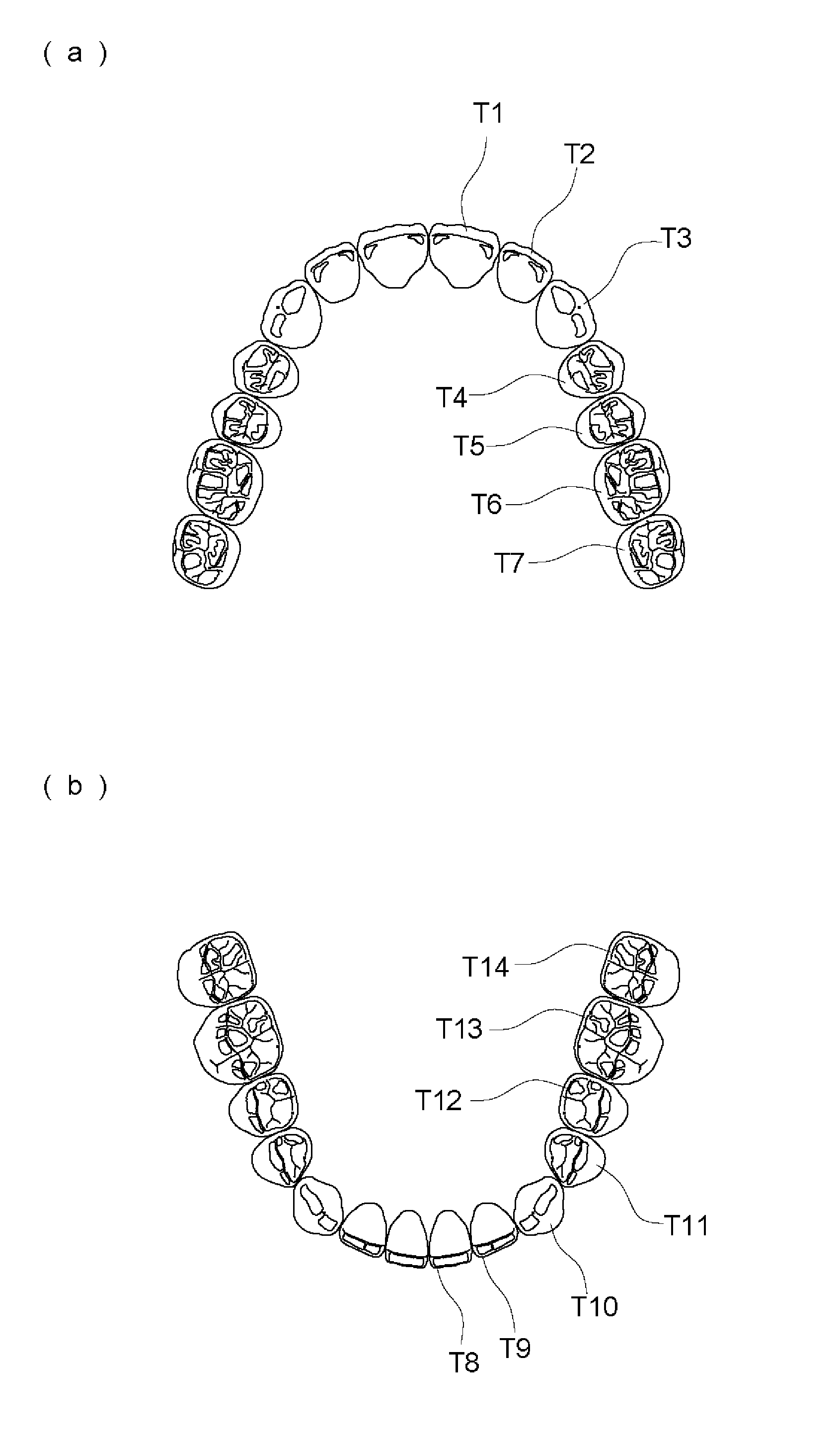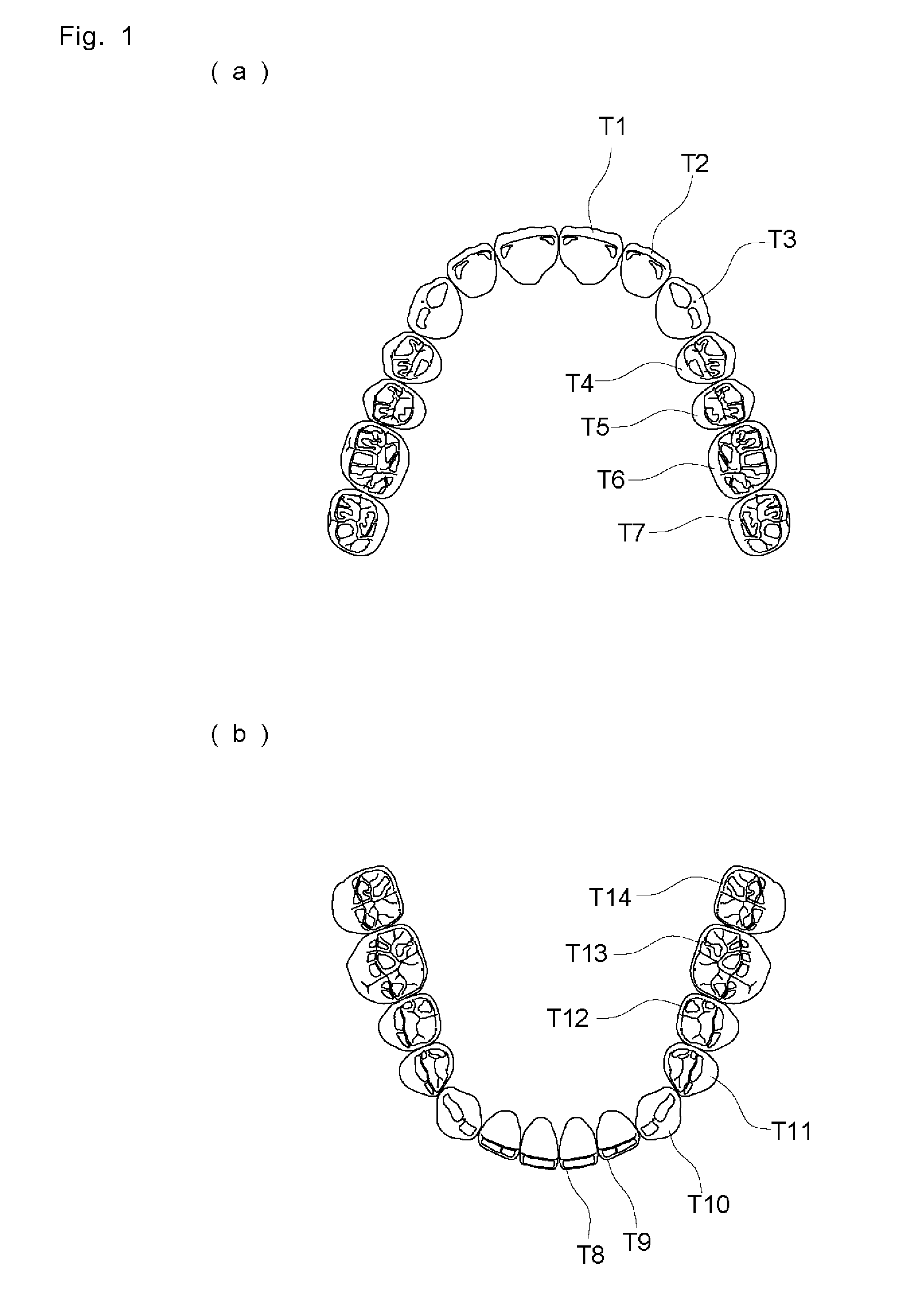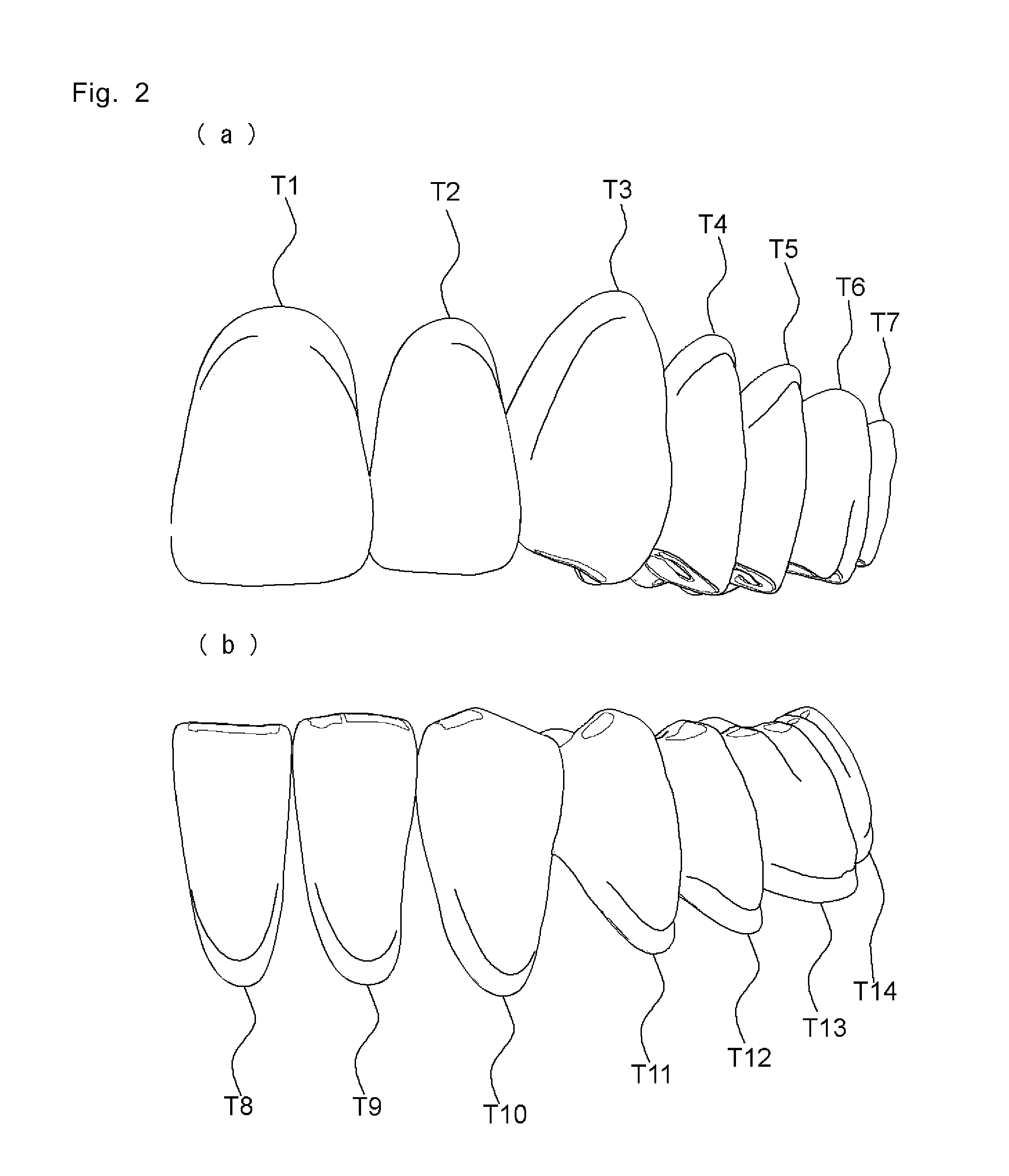Artificial teeth easily enabling bilateral balanced occlusion
a technology of balanced occlusion and artificial teeth, which is applied in the field of artificial teeth easily enabling bilateral balanced occlusion, can solve the problems of difficult replication, time-consuming and precise grinding adjustment, and achieve reliable occlusion, reduce the burden of intricate work, and reduce the difficulty of replication
- Summary
- Abstract
- Description
- Claims
- Application Information
AI Technical Summary
Benefits of technology
Problems solved by technology
Method used
Image
Examples
examples
[0284]Below are described examples.
[0285]Nine dental technicians engaged in the alignment of artificial teeth were selected as their routine task for an alignment test of sample artificial teeth according to the present invention using Handy IIA articulator supplied by SHOFU INC. loaded with a toothless plaster model. Table 1 shows required time and objective evaluation on achievement of “bilateral balanced occlusion”, and their own subjective evaluation on “if they found it easy to obtain the bilateral balanced occlusion”.
TABLE 1Required timeSubjective(min)AchievementevaluationDental technician A45Δ∘Dental technician B43∘∘Dental technician C42∘∘Dental technician D88Δ∘Dental technician E46ΔxDental technician F35∘∘Dental technician G40∘∘Dental technician H37∘∘Dental technician I46∘∘
PUM
 Login to View More
Login to View More Abstract
Description
Claims
Application Information
 Login to View More
Login to View More - R&D
- Intellectual Property
- Life Sciences
- Materials
- Tech Scout
- Unparalleled Data Quality
- Higher Quality Content
- 60% Fewer Hallucinations
Browse by: Latest US Patents, China's latest patents, Technical Efficacy Thesaurus, Application Domain, Technology Topic, Popular Technical Reports.
© 2025 PatSnap. All rights reserved.Legal|Privacy policy|Modern Slavery Act Transparency Statement|Sitemap|About US| Contact US: help@patsnap.com



